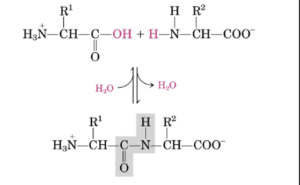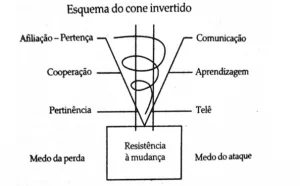REVIEW ARTICLE
TEIXEIRA, Paulo Tadeu Ferreira [1]
TEIXEIRA, Paulo Tadeu Ferreira. Cognitive behavioral therapy and its relevance in the therapeutic process. Revista Científica Multidisciplinar Núcleo do Conhecimento. Year 06, Ed. 03, Vol. 01, pp. 86-97. March 2021. ISSN: 2448-0959, Access link: https://www.nucleodoconhecimento.com.br/psychology/cognitive-behavioral
SUMMARY
Cognitive behavioral therapy (CBT) has been a widely used approach in several contexts, and can therefore be useful to help in promoting and maintaining the quality of life of individuals. For the preparation of this article, a bibliographic review of previous productions that analyzed the relevance of cognitive behavioral theory was carried out.It is noticed that professionals who study and work with the CBT approach can explore this field of work by conducting experimental research in order to suggest a specific intervention model for the various psychological demands assisted. This article is a qualitative, descriptive and exploratory research. Data available on websites referring to the study of Cognitive Behavioral Therapy were used as sources. CBT presents as a singularity to be structured and directed to the psychological demands of today, in order to solve problems and modify disturbing thoughts, feelings and behaviors. It is concluded that this theoretical approach stands out for the theoretical and practical factors about cognition, emotions and behavior.
Keywords: cognitive behavioral therapy, intervention, behavior.
1. INTRODUCTION
The present article is a compilation of theoretical references of the study in the CBT (cognitive behavioral therapy) approach. Research and clinical practice reveal that research in this approach is effective in reducing symptoms and recurrence rates, with or without medication, in a wide variety of psychiatric disorders. It is estimated that there are published more than 400 articles of results of cognitive-behavioral interventions, scientific productions continue to develop.
The cognitive model comes from research conducted by psychiatrist Aaron Beck aimed at elucidating psychological processes in the treatment of depression, in an attempt to prove freudian theory of depression as repressed retro hostility. According to the approach, Cognitive Therapy is based on the following principle: the way reality is perceived and processed by individuals directly influences the way they feel and behave, following the cognitive triad established by beck studies.
This article is a qualitative, descriptive and exploratory research. Data available on websites referring to the study of Cognitive Behavioral Therapy were used as sources, researched in the VHL-PSI and Google Scholar, through health descriptors such as cognitive therapy, psychological evaluation, psychological treatment and clinical psychology among other combinations of words.
Cognitive-Behavioral Therapy (CBT) presents as singularity to be structured, oriented to the psychological demands of the present, directed to the resolution of problems and the modification of troubled thoughts, feelings and behaviors. Research in the area reveals that psychotherapy contributes very effectively to psychological treatment for emotional disorders.
2. COGNITIVE BEHAVIORAL THERAPY
Cognitive therapy presents its studies aimed at the analysis of cognitive factors that are associated with changes in psychic manifestations and the maintenance of symptoms. As new empirical perspectives of behavioral research emerge, new studies for the development of clinical management emerge through techniques especially focused on the treatment of phobias, obsessions, sexual dysfunctions, among others, Cognitive Behavioral Therapy stands out for theoretical and practical factors about cognition, emotions and behavior. (BAHLS; NAVOLAR, 2014).
Cognitive-behavioral psychotherapy is a practice of psychological help that is based on a science and a philosophy of behavior characterized by a naturalistic and deterministic conception of human behavior, by the adhering to an empiricism and an experimental methodology as a support of knowledge and a pragmatic attitude towards psychological problems (RANGÉ, 2001a, p. 35).
Cognitive Therapy has its origins in philosophical currents and ancient religions, such as Greek stoicism, Taoism, and Buddhism that postulated the influence of ideas on emotions. In its rationalist and empiric process, cognitive behavioral therapy is based on scientific constructions with broad competence in clinical contexts, focused on social learning, which reduces panic crises and generalized anxiety among others, expanding techniques of focus on mood disorders; and several other studies on cognitive aspects as a search for a logic that explains psychological balance (ZAKHOUR et al., 2020).
The theoretical contributions of behavioral cognitive therapies began to be developed at the beginning of the 20th century due to the emergence of Darwin’s theory of evolutionism and a growing realization of empirical studies on behavior and constructivist perspective. And it was in the 1970s that the assumption that a psychological problem could be understood under three divergent systems was developed and disseminated. This idea represented a break with the unitary view of the psychological problems that until then existed and thus, more emphasis was placed on the cognitive triad developed by Aaron Beck (BAHLS; NAVOLAR, 2014).
Behavioral Therapy becomes a growing movement from the 1960s onto Aaron T’s postulate. Beck. This approach is developed by different theoretical concepts over time, premises and techniques, based on many works developed by great researchers, these being: Pavlov with regard to classical conditioning, Watson’s related to behavioralism and Thorndike’s work related to learning and Skinner’s studies on operating conditioning (CABALLO, 1996).
The cognitive model in CBT proposes that dysfunctional thinking, which has an influence on the patient’s mood and thinking, is common in all disorders. Thus, clinical research developed in CBT shows that people feel and/or behave according to the interpretations they make in the face of a given situation. Thus, it is understood that it is cognitive processing that leads the individual to constantly evaluate events and these have their own meanings, interpreted as automatic thoughts (WRIGHT, 2018).
Automatic thoughts are important for assessing whether a person’s optics are consistent with the facts as they really are, or whether they are distorted perceptions. It is necessary to identify these automatic processes of information to understand if there is a degree of illness in mental health and also to understand how it reacts to circumstances investigating their beliefs, which are matrices that modulate their cognitive triad, whether said to be normal as pathological ones. It is a clinical management of Cognitive Behavioral Therapy to restructure unconscious schemes that are deregulating the individual, either by mild signs to severe psychopathologies (GOMES, 2019).
In Cognitive Behavioral Therapy, basic automatic processes involve unconscious cognitive structures called schemes and beliefs. Thus, the approach is made through evidence, that automatic thoughts are related to the most accessible part of consciousness (LÓSS, 2018).
Central and intermediate beliefs are at a deeper level of cognitive structure, as they are absolute and conditional rules, respectively, in the influence of emotional regulation and self-interpretation, such as self-esteem, and their interpretations of the world. They are essential to understand the whole way the patient takes care of himself, interprets his thoughts and emotional manifestations. Contributes to understand cognitive errors in their perception and interpretation; how their attitudes, rules and assumptions are represented; and how the absolutist nuclear rules about their self and their relationship with each other take place (DATTILIO, 2006).
In cognitive behavioral therapy beliefs constitute this more categorical level of hypotheses, assists and broadens the clinical and investigative view that the therapist must establish in his sessions and alliance relationship with his patient, that is, beliefs provide experiences, values, principles credited as true and global. (CIZIL, 2019).
In this approach, generating coping strategies and action plans with the patient favors the therapist’s construction of his interpretation and diagnosis, it is necessary to establish, in this sense, reconciliation of goals, hypothesis surveys to contribute to the cognitive process of flexibilization and modification of dysfunctional beliefs of patients, opening spaces for lines of research and interventions necessary for each peculiar context (BEZ, 2013).
The Therapeutic Alliance built on the therapeutic process is the first clinical management for the therapist to identify how the patient establishes their relationships in general and contributes to the investigation of the patient’s dysfunctional beliefs. These variables of mental suffering are diverse, which enables the therapist’s empathy to the patient, understanding the degree of psychological impairment, contributing to the establishment of a positive expectation bond about psychotherapy, quality of interpersonal relationships, problem solving ability and degree of emotional reactivity (SILVA, 2014).
The work developed by the therapist in this approach involves empathy, affective ability to understand with the other his pain, stress and what is presented to the therapist as demand, human warmth and authenticity, transparency and coherence. Empathy then results in the therapeutic relationship a partnership of support and confidentiality that make both the patient and the therapist develop an active collaboration in treatment adherence. Thus, in order to achieve therapeutic goals, tasks, and subjects to be worked on in therapy, it is necessary to establish a solid therapeutic alliance, however, without the therapist losing his active function on the prescription of therapeutic exercises. (ZAKHOUR et al., 2020)
Thus, cognitive behavioral psychotherapy enables in its clinical managements, application of psychological techniques that provide a psychoeducation to the patient to become aware of their erroneous thoughts and beliefs, and that provides a competent investigation of the therapist in his role of restructuring the patient’s emotional and behavior (MARINHO, 2020).
Cognitive Behavioral Therapy is seen as a focal and objective therapy, characterized in the investigation of the causes of suffering, monitoring the way of thinking of the individual, his social relationships and his emotional and behavioral reactions. This self-analysis helps the patient to be assertive and assume the responsibility of helping himself with the help of the therapist, as well as metacognition, which is responsible for controlling its conscious automatic processing in search of problem solving (HAYES and HOLLMANN, 2020).
2.1 PSYCHOLOGICAL ASSESSMENT IN COGNITIVE BEHAVIORAL THERAPY
Knapp (2008) states that the role of the clinical psychologist in cognitive behavioral therapy is the evaluation of behaviors, analyze with empathy and clinical competence the cognitive concepts of cases and clinical pictures that arise in the daily life of the individual, in order to implement intervention instruments and continue with the elaboration of strategies for evaluating adaptive regimens and modify or if possible reduce the influences of deadaptive schemes , requiring technical performance in psychological evaluation and cognitive conceptualization.
Psychological evaluation is understood as psychological assessment, in cognitive behavioral therapy, as a continuous base process of intervention for coping and treatment strategies, a close link between evaluation and treatment that has how to manage the establishment of functional relationships between the environment, behavior, cognitions and emotions, emotionally regulating the patient’s demand and guiding the therapist’s way of posture as to whom he/she assists. Thus, when evaluating, the therapist is to intervene, in this intervention, the therapist analyzes the patient’s response and their demands for their therapeutic management of harm minimization during treatment (GOMES, 2019).
Techniques such as anamnesis, cognitive screening, cognitive conceptualization, therapeutic cooping focused on problems and emotions, elaboration of hypotheses, among others, allows a comprehensiveness in listening and analysis in every treatment that the therapist performs in his patient, which causes the therapist to collect broad information to understand the complexities of the dysfunctional beliefs of the individual he assists in his therapeutic setting. Thus, the beginning of treatment is marked by this cognitive assessment, as it will be part of every theoretical framework of interventional guidance in which they will be fundamental for a psychotherapeutic development based on processes, evidence, competencies and coping resource instruments (BECK, 2013).
In cognitive behavioral therapy, every evaluation instrument starts from the first contact with the patient, in their therapeutic alliance, to the final sessions, because these instruments provide the therapist to obtain the elaboration of hypotheses related to each case, which can be confirmed or not, or modified to the extent that new data are being presented (CHIAPETTI and GALDINO , 2017).
Cizil and Beluco (2019) point out that the objectives of the cognitive-behavioral therapist are:
The therapist’s goals are to promote symptom relief, facilitate remission of the disorder, help the patient solve their most urgent problems, and teach skills to prevent relapse. Cognitive behavioral therapy sessions are structured.In them the therapist teaches patients to identify, evaluate and respond to their dysfunctional thoughts and beliefs helps the patient to identify the main cognitions and to adopt more realistic and adaptable point of view, leading the patient to feel emotionally better, and behave more functionally. (p.38)
Cognitive therapy is based on how people think, perceive, learn or recall information in the face of relationships with the environment, and like other sciences, depends on the work of both rationalists and empiricists for the development of their theory, and thus psychologists base their empirical observations and through this dialectic observations and theoretical reviews contextualize new reinsertions of cognitive therapy (STERNBERG , 2015).
Bahls and Navolar (2014) define that cognitive therapy uses the concept of the biopsychosocial structure to determine and understand phenomena related to human psychology, thus focused on the cognitive factors of psychopathology, behavioral theory allows knowledge about the general laws of behavior, in order to make them more predictable. Therefore, for the author it is essential that the CBT therapist has the knowledge of terms and concepts related to these approaches so that it can achieve success in the application of the techniques.
In the use of instruments to analyze patient demand, techniques such as: interviews, anamnesis and techniques aimed at contingencies that may arise are used, emphasizing that for these techniques include analyzing: the history and life situation of the patient, the signs, symptoms and clinical diagnoses, the psychiatric and psychotherapeutic history and the verification of the patient’s mood and mental status. Thus, it understands that CBT shares the basic assumption that cognitive activity and evaluation influence behavior, and can be monitored and altered, in such a way that changes in cognition determine changes in behavior (HAYES and HOLLMANN, 2020).
Cognitive behavioral therapy is based on the theoretical assumption that an individual’s emotions and behaviors are largely determinant by the way they structure the world. Cognitive-behavioral therapy techniques have as their goal the influence on the patient’s thinking, behavior, mood and physiological stimulation (BECK, 2013).
The cognitive behavioral therapist seeks to identify the disadaptive behaviors and how they arise, to work, to work the emotional skills and the sense of competence and management of self-esteem of the person, and how this person can transform his traumas into potentialities that provide him beyond a social learning, a regulation in his/her mood, in order to influence the patient to have a more assertive behavioral pattern to face their own problems , assisting and positively reinforcing the competencies of patient behavior (BAHLS; NAVOLAR, 2014).
The approaches that encompass CBT, although different, are similar, due to the cognitive mediation that manages human behavior, besides being the first option of treatments for many psychopathologies, CBT is described as therapy, whose main objective is to produce changes in thinking and behavior in its meaning systems, transforming the emotional and behavioral structure in a lasting way (PETERSEN; WAINER, 2011).
Wright; Basco and Thase (2008) propose the essential characteristics in the therapeutic relationship should include the skills of understanding and empathy in the ability to gain confidence during the therapeutic process. The construction of the therapeutic alliance in cognitive-behavioral theory, according to the authors, is guided by the empirical focus on the method of interventions and involves a high level of collaboration in tasks and techniques performed in an active way where the therapist and patient work together throughout the therapy regardless of their level of maturation.
Pombo et al. (2016) state that the therapist should be receptive and facilitator in the description of events, should also take into account the cultural aspects that influence the values, cognitions, meanings and norms of behavior, diagnosis and decisions related to treatment.
3. FINAL CONSIDERATIONS
It is believed that interventions based on CBT have proved empirically valid, and may contribute to the promotion of the well-being of individuals in the various psychopathology that can be developed over the course of life.
It is expected that the participation of the therapist is effective so that the patient is stimulated and motivated so that he can be the protagonist of the therapeutic setting, so that the therapist can be a collaborator of the process, promoting the development of the patient’s potentialities, the restoration of his quality of life and the reduction of damage.
It is observed in the literature that CBT (Cognitive Behavioral Therapy) is effective in the treatment and prevention of various psychopathologies regardless of the phase of human development. The applicability of this approach in the therapeutic process becomes relevant for changes in behavioral repertorio. The research highlights the importance of in-depth studies by trained psychologists, emphasizing the importance of elements considered essential for CBT, such as: the therapeutic alliance, the collaborative relationship and the establishment of goals.
REFERENCES
BAHLS, S.C.; NAVOLAR, A. B.B.; Terapia cognitivo-comportamental: conceitos e pressupostos teóricos. Revista Eletrônica de Psicologia, nº 4, Curitiba, jul. 2010. Acesso em 22 de Dez de 2020.
BECK, Judith. Terapia cognitivo-comportamental: teoria e prática. 2ª ed. Porto Alegre: Artmed, 2013
BEZ, A. S; Modificação de Crenças e Modelação Proativa de Metas: Perspetivas de Interface. Santa Cruz do Sul, v. 38, n. 65, p. 218-232, jul. dez. 2013.
CABALLO, Vicente E. Manual de Técnicas de Terapia e Modificação do Comportamento. São Paulo: Livraria Santos Editora Com. Imp. Ltda., 1996.
CIZIL, M.; BELUCO, A. As contribuições da terapia cognitivo comportamental no tratamento da depressão. Revista UNINGÁ, v. 56, p. 10, 2019.
DATTILIO, F. M. Reestruturação de Esquemas Familiares. Rev. Bras. Ter. Cogn. [online], v. 2, n. 1, p. 17-34, 2006.
GOMES, H.V. O Manejo Clínico Cognitivo Comportamental no Tratamento de Transtornos Depressivos. Psicologia: O portal dos Psicólogos. Universidade Federal de Piauí – UFPI. 2019.
KNAPP, Paulo et al. Terapia Cognitivo-Comportamental na Prática Psiquiátrica. Porto Alegre: Artmed, 2008.
LÓSS, J. S; Terapia Cognitiva Comportamental Frente a Teoria de Aaron Beck no Tratamento do Transtorno Depressivo. Rev. Transformar. Itaperuna: Rio de Janeiro. ed. 2, vol 12, n. 2, 2018, p. 185-197.
MARINHO, M. P. Uma análise da construção de crenças a partir: do marxismo Ideológico de Antônio Gramsci, da terapia cognitiva comportamental e da teoria da arquitetura das crenças de Peterson. Repositório Institucional da Faculdade da Amazônia. 2020.
PETERSEN, C. S.; WAINER, R. Terapias Cognitivo-Comportamentais para crianças e adolescentes: ciências e arte. Porto Alegre. Artmed, 2011.
POMBO, Samuel; ALMEIDA, Carolina; PAULINO, Sofia; GONÇALVES, João; FERRO, Ana; GÓIS, Carlos; SAMPAIO, Daniel. TOWARD A COGNITIVE-BEHAVIORAL INTERVENTION CULTURALLY ADAPTED: implications for clinical practice.: IMPLICATIONS FOR CLINICAL PRACTICE. Psicologia, Saúde & Doença, [s.l.], v. 17, n. 3, p. 561-574, 10 nov. 2016.
RANGÉ, Bernard (Org). Psicoterapia Comportamental e Cognitiva: Pesquisa, Prática, Aplicações e Problemas. Vol. 1. São Paulo: Editoria Livro Pleno, 2001a.
STERNBERG, R, J. Psicologia Cognitiva. Cegage Learning. São Pulo. 2015.
SILVA, Marlene Alves da. Terapia Cognitiva-Comportamental: da teoria a prática. Psico-USF, Itatiba , v. 19, n. 1, p. 167-168, Apr. 2014 .
WRIGHT JH, Basco MR, Thase ME. Aprendendo a terapia cognitivo-comportamental: um guia ilustrado. Porto Alegre: Artmed; 2018.
ZAKHOUR, Stephanie et al . Cognitive-behavioral therapy for treatment-resistant depression in adults and adolescents: a systematic review. Trends Psychiatry Psychother., Porto Alegre, 2020.
[1] Master Of Technologies Applicable Bioenergy- FTC SSA. Post Graduated In Hospital Clinical Psychology – FSBA-SSA. Post Graduated In Neuropsychology -FACINTER PR. Graduated in Psychology – FTC ITABUNA.
Submitted: January, 2021.
Approved: March, 2021.





One Response
Great post! and incredible blog ! Very helpful post! I must say. Simple & interesting. Wonderful work!